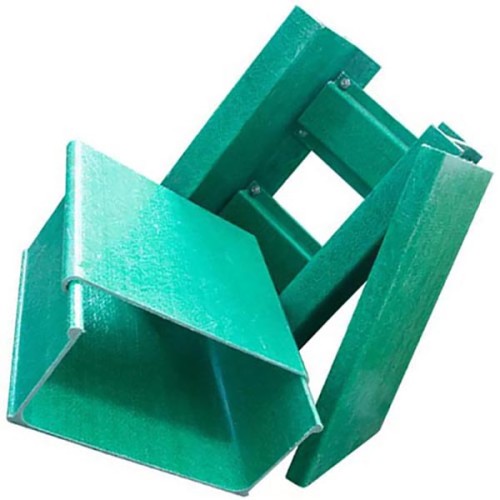Fiberglass Cable Tray: Durable & Corrosion-Resistant Cable Management
Fiberglass cable trays (also known as FRP cable trays or composite cable trays) are engineered to organize and protect electrical wiring in demanding environments. Combining lightweight durability with resistance to corrosion, these trays outperform traditional materials like steel or aluminum in industrial settings. Below, we explore their manufacturing process, classifications, applications, and advantages.
What is a Fiberglass Cable Tray?
A fiberglass cable tray is a non-conductive, fiber-reinforced polymer (FRP) structure designed to securely route cables in commercial, marine, and industrial facilities. Unlike metal trays, FRP trays resist rust, chemicals, and UV exposure, making them ideal for outdoor installations or corrosive atmospheres.
Manufacturing & Composition
Fiberglass cable trays are manufactured using pultrusion, a process that layers fiberglass strands with resin to create high-strength, lightweight profiles. This method ensures uniformity and enhances load-bearing capacity. Key components include:
- Fiberglass mesh: Reinforces structural integrity.
- Polyester resin: Provides chemical and weather resistance.
Classifications & Specifications
Fiberglass cable management systems are categorized by load capacity, ladder vs. solid-bottom designs, and environmental ratings. Common specifications include:
- Load classes: Light-duty (100 lbs/ft) to heavy-duty (500+ lbs/ft).
- Widths: 2” to 36” to accommodate diverse cabling needs.
- Fire ratings: ASTM E84 compliant for low smoke and flame spread.
Applications of FRP Cable Trays
Fiber-reinforced polymer cable trays excel in environments where metal fails:
- Oil & gas plants: Resistant to hydrocarbons and saltwater.
- Chemical processing: Withstands acidic/alkaline exposure.
- Marine installations: Immune to salt corrosion.
- Telecom/data centers: Non-conductive and EMI-resistant.
Fiberglass vs. Steel vs. Aluminum: Key Comparisons
- Corrosion Resistance: FRP trays outperform steel (prone to rust) and aluminum (vulnerable to galvanic corrosion).
- Weight: Composite cable trays are 30% lighter than steel, reducing installation labor.
- Conductivity: Unlike metal, non-conductive cable trays eliminate electrical hazards.
Installation Best Practices
- Supports: Space brackets every 4–6 feet for heavy-duty fiberglass trays.
- Expansion Joints: Accommodate thermal shifts in outdoor setups.
- UV Protection: Opt for resin-rich coatings in sun-exposed areas.
For industries prioritizing longevity and safety, fiberglass cable trays (or industrial fiberglass trays) offer unmatched reliability. Their blend of corrosion resistance, lightweight design, and compliance with fire safety standards makes them a superior choice for modern infrastructure.

